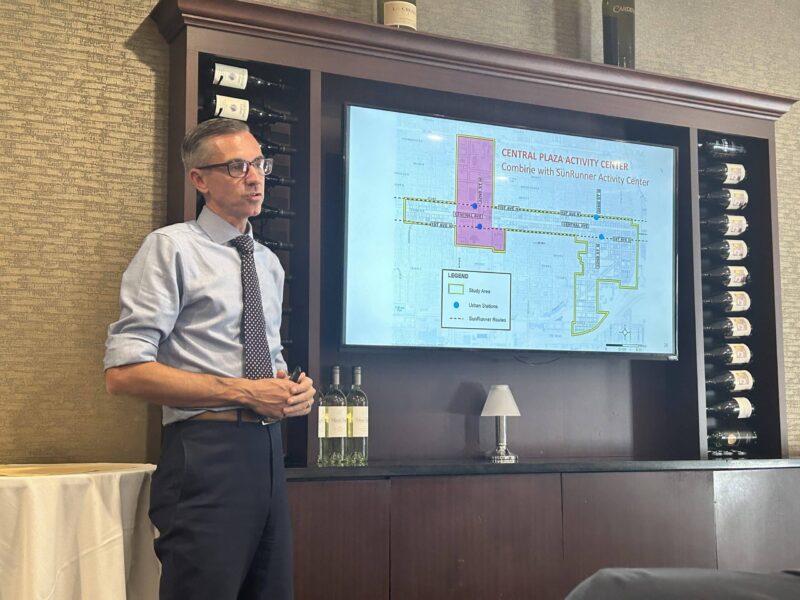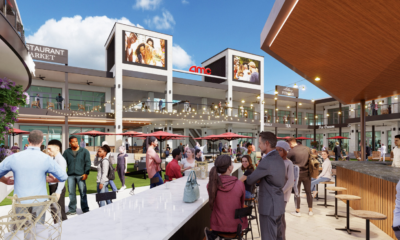Thrive
Will increased density allowances bring more development?

Jillian Bandes noted that federal grants to establish the SunRunner came with the caveat that local leaders must update zoning along the route to enhance development and promote ridership.
Bandes, project manager for Bandes Construction Company, opened the discussion at Tuesday’s Developer’s Council meeting hosted by the St. Petersburg Downtown Partnership. The topic du jour was proposed land use changes around the region’s first bus rapid transit (BRT) service.
“We are at a really critical juncture to now move into the implementation phase and put some more folks around the stops,” said Bandes, also founder of YIMBY (Yes in My Backyard) St. Pete. “And really make a dent in the affordability and transportation crisis that our communities are experiencing.”
St. Petersburg city officials are now working to implement recommendations from the federally funded SunRunner Rising Development Study. Much of the focus is on urban stations along Central Avenue west of downtown at 22nd Street and 32nd Street North and South.
Derek Kilborn, the city’s urban planning and historic preservation manager, led the presentation. He explained that the transit-oriented development (TOD) discussion intertwines with recent citywide zoning changes.
Kilborn also noted that the Live Local Act “might be a good guide” when developers discuss zoning with the city council or other stakeholders. The recently enacted state legislation allows new developments to match the city’s highest allowable density – 82 units per acre downtown – within a mile radius.
However, he also noted that increased density allowances do not necessarily equate to new development. He used the Central Avenue Revitalization Plan, adopted in 2012, as an example.
It increased permitted density along the corridor from 15 or 24 units per acre to 60 – or 70 if the project includes workforce housing.
“We have not had any redevelopment along this section of Central Avenue taking advantage of density that was created …,” Kilborn said. “City staff is definitely supportive of having this BRT/SunRunner discussion around the station areas, expanding use options and multifamily (projects) along 22nd Street South, but there are some mysteries that escape us.”

A map showing the urban SunRunner stations along Central Avenue. Screengrab.
Bandes noted that developers have only pulled two permits since the city council approved NTM-1 zoning changes in March. That increased density allowances for 3,000 parcels along heavily trafficked corridors from 15 units per acre to 30.
Bandes said, “The math doesn’t work. The site plans can’t fit the number of units that were allowed.”
Kilborn said city administrators are trying to discern project constraints. Those could include the unit limit, floor area ratio (FAR) parameters or lending issues.
“The residents look at this and say, ‘Well, you allowed 60 units per acre, and nothing happened. And now you’re asking me to go to 80 or 100,'” Kilborn added. “Why should the community support that? Or a council member might ask us, ‘Well, why should I approve this?’
“These are some of the questions or objections that have come in that we have to try to figure out how to answer.”
He explained that the primary TOD focus is establishing density, intensity, height and parking regulations. Kilborn also reiterated that plans are subject to county review, which presents additional challenges.
Planning administrators are finalizing numbers before a Sept. 14 meeting with city council members. Kilborn said most developers request 40 units per acre for multifamily projects with structured parking.
A new zoning category to provide “missing middle” housing developments along 34th Street permits 30 units per acre. Kilborn said city officials are discussing increasing commercial mixed-use allowances to 30-45 units per acre “and in some cases, more than that.”
However, stakeholders must account for unintended consequences. Kilborn noted that upzoning could increase land values beyond what the surrounding housing market could support.
One attendee warned against “going too fast in some areas.” Another said an incremental approach is more palatable to residents and elected officials.
Kilborn explained that residents often favor 10 to 12-story mid-rise buildings rather than towers. He said, “Density does not directly translate to building typology or what the building’s going to look like.”
“If you’re just opposed to tall buildings, it doesn’t mean that you also must be opposed to higher density numbers,” Kilborn added.
While the city council’s feedback at the Sept. 14 meeting could affect the schedule, he said administrators remain committed to completing the TOD process by Jan. 18.







